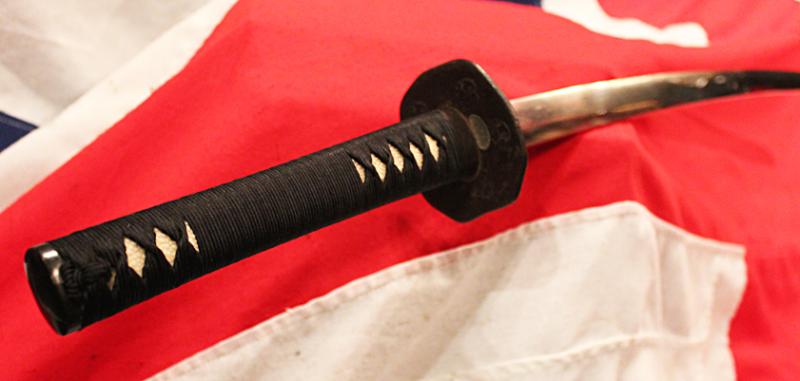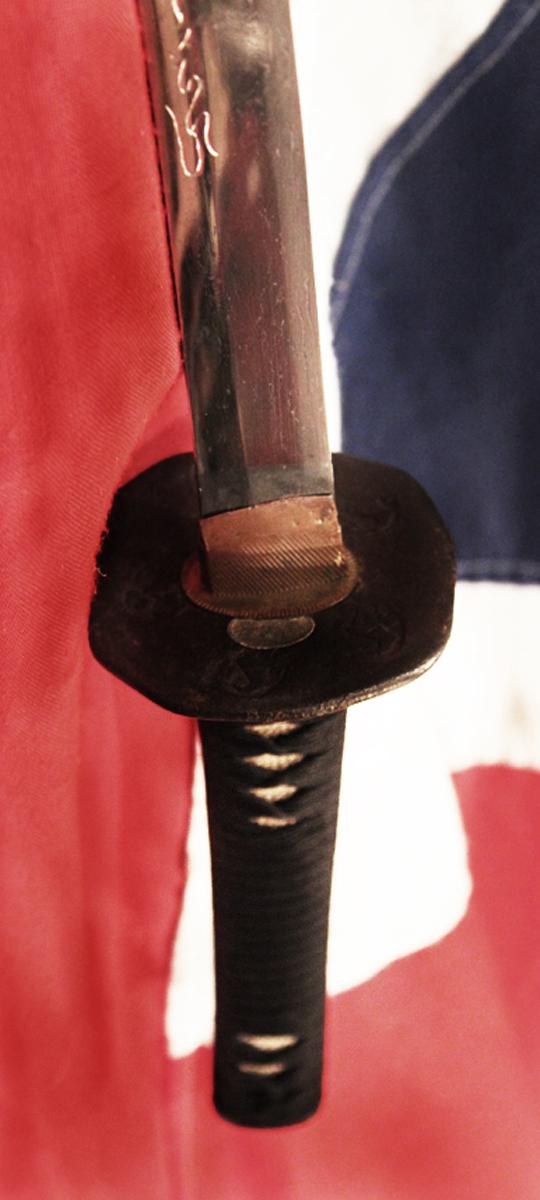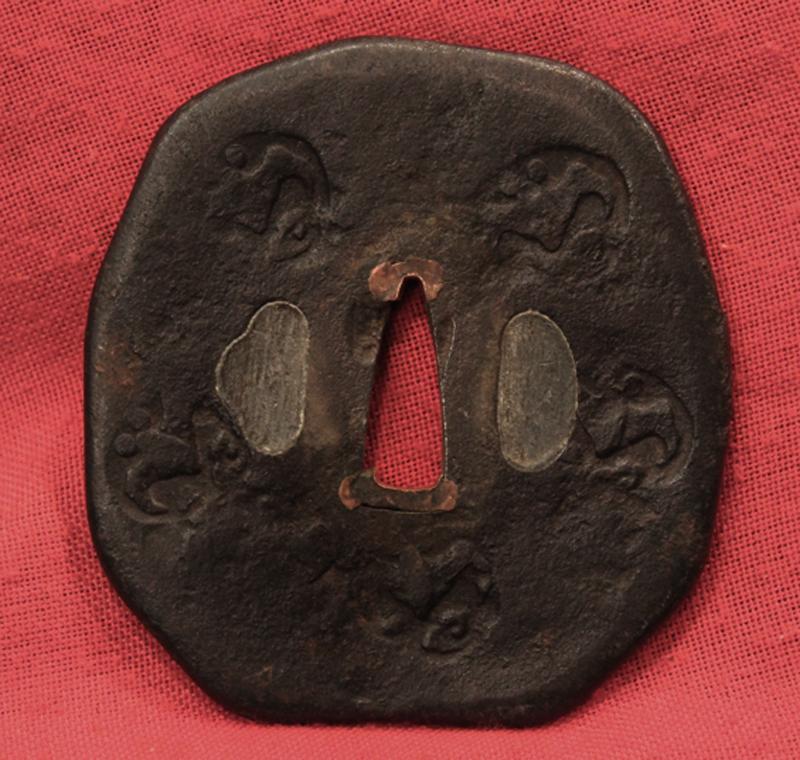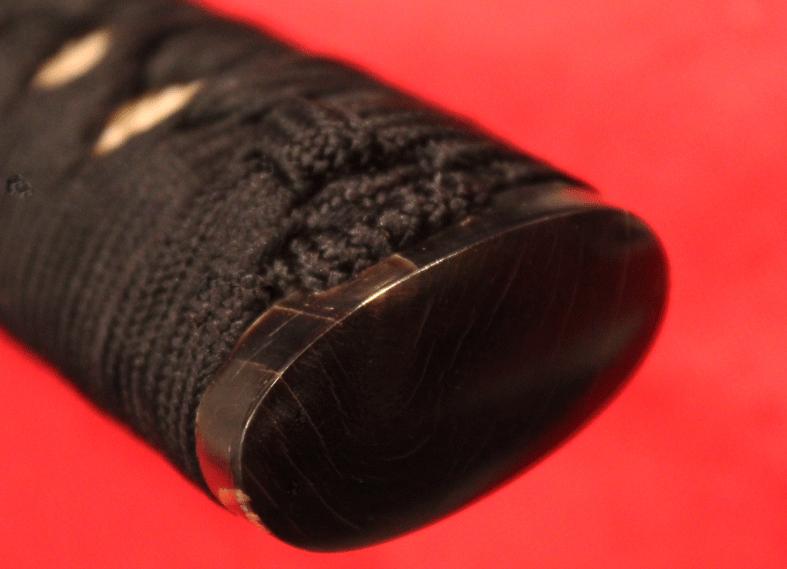A Good Early Samurai Katana, Koto Era, With Carved Horimono Blade,
The super and beautiful ancient blade is almost 500 years old, hand traditionally made circa 1550, displayed in all its original Edo period mounts and fittings. Overall in beautiful condition for its age.
It is a very long bladed early shibui 'battle sword' katana that has a charming hand carved engraved horimono blade, bearing a carved sankrit Buddhist bonji, and blowing leaves, down the length of the 30" long blade. It has a gentle gunome hamon and it shows very small areas of surface wear due to it's great age.
The tsuka is shibui 'battle wrapped' a somewhat simplified version of traditional re-wrapping that has no menuki. a sword that is called shibui, in Japanese sword tradition which translates to 'quiet' . Entirely unobtrusive with no external frills or decorative features at all, a blade that was made for serious combat and not to simply show the status of the samurai owner.
All the fittings are original Edo, the hilt has a plain russet iron fushi, carved buffalo horn kashira pommel. The saya is completely original Edo period with fine black ishime stone lacquer. The 17th century iron tsuba bears repeated stamped decoration of stylized bats.
Keiko Osawa: Until the 20th century, bats were very popular in Japanese culture. Under the influence of Chinese culture, the bat was viewed as a good-luck symbol, and its image was often used in pottery, sword fittings and kimonos. In Japanese, the word for bat is Koumori. There are several possible explanations as to why bats were given this name. One explanation is that it originated from the word Kawamori, which means protecting rivers. A second option is that it came from the word Kawahari, which means skin is stretched between bones. But it is also logical to believe that it was derived from Kawahori, which means eating mosquitoes.
No px or layaway applies to special offer items
Code: 24733
5450.00 GBP










